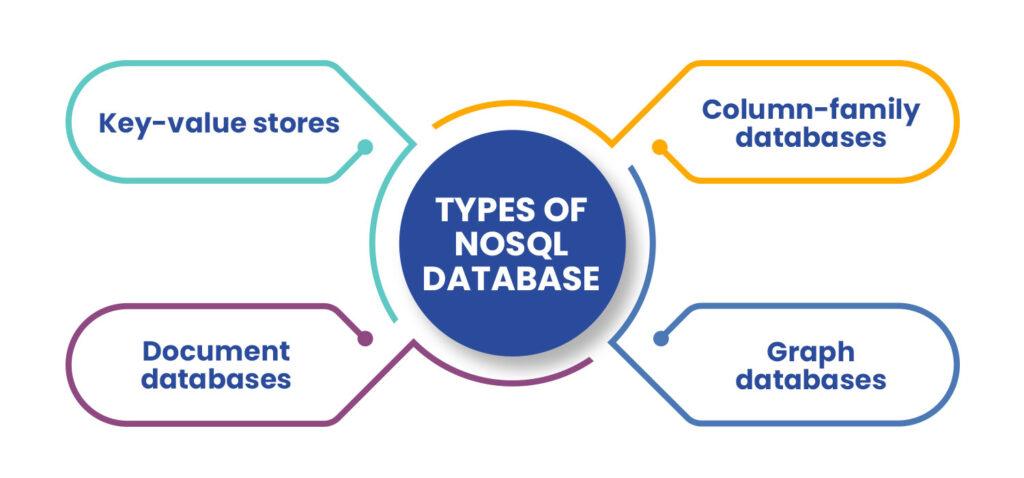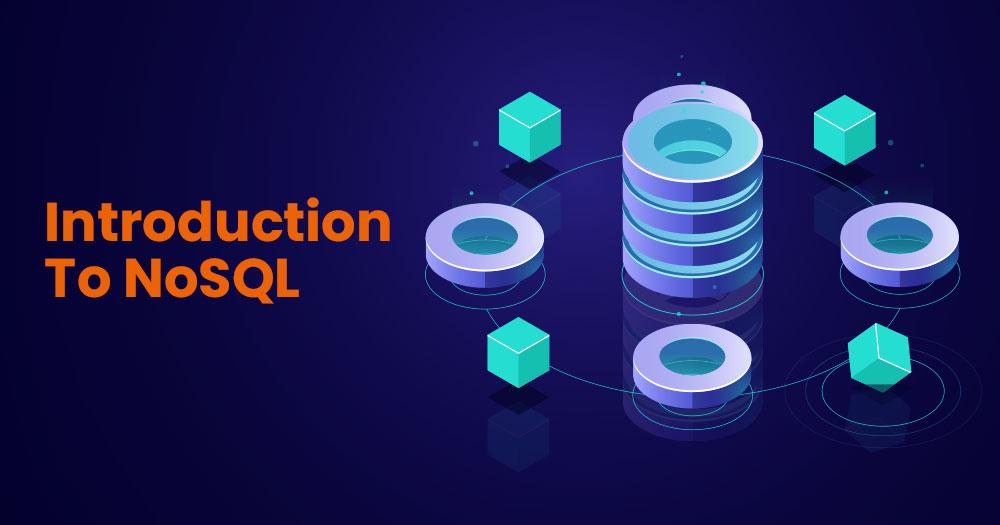What is NoSQL Database?
NoSQL, also known as Not only SQL, refers to a non-relational database that does not use the traditional SQL (Structured Query Language) for storing and retrieving data; moreover, the data are not stored in complex tabular form. They use alternative data models, such as key-value pairs, document-based, graph-based, or column-based. These models are capable of handling big volumes of data across servers hassle-free. Some believe that NoSQL stands for Not-SQL or non-SQL.
Why NoSQL Database?
Before understanding the reason behind the popularity of NoSQL, we need to analyze the drawbacks of SQL.
Back in the 1970s, when RDBMS (Relational Data Base Management) was invented, memory was expensive. Therefore, the prime focus was to use the space efficiently, which eventually gave birth to the SQL language we use to write our data in normalized form.
SQL and its commands became very popular and could solve all the problems comfortably. Things started changing in the early 2000s when major tech giants’ popularity boomed in the market, and the norms started changing. Before this, we only had structured data, but semi and unstructured data also came into the picture. Not only this, but the volume of data also increased exponentially.
Types of NoSQL Databases
NoSQL databases are a class of database management systems designed to handle large amounts of data distributed across many servers. They are often used in cases where the data is too large or complex to be stored and managed using traditional relational database management systems.
There are several different types of NoSQL databases, including:

Key-value Stores
These databases store data as a collection of key-value pairs. The key is used to identify the data, and the value is the data itself. It is designed in such a way that it can handle heavy loads and huge data. It finds its use in the user profile, user preference, and shopping carts. Redis, dynamo, and Riak are a few of the popular examples of NoSQL key-value pared databases.
Document Databases
These databases store data in the form of JSON, BSON, and XML documents. Data here are stored in key-value pairs, where the value is stored in the form of a document. It is popular among developers because of the flexibility to rework the structure of the document. We avoid using this database for complex transactions. Use case includes trading platform, blogging platform, and other CMS system. MongoDB, Riak, and LotusNotes are examples of document databases.
Column-Family Databases
These databases store data in tables with rows and columns, like a traditional relational database. However, each row in a column-family database can have a variable number of columns. These databases are designed to handle complex queries. Cassandra and HyperTable are examples of such databases.
Graph Databases
These databases are designed to store and manage data organized as a graph, with nodes and edges representing entities and relationships. Every node and edge has a unique identifier. Graph databases are multi-relational, and unlike relational databases, data are tightly held. Traversing is also fast here, as there is no need to calculate the relationship. Real-world businesses can hardly survive solely on graph databases; therefore, a traditional database is needed alongside. Graph database finds their use in fraud detection and social network and knowledge graph. Examples of graph databases are Neo4j, FlockDB, and OrientDB.
How Does NoSQL Work?
NoSQL (Not only SQL) databases work differently from traditional relational databases, which store data in structured tables with a fixed schema. Instead, They are designed to store unstructured or semi-structured data flexibly, scalable, and distributedly.
Here are the basic principles of how NoSQL databases work:
- Data Model: NoSQL databases use a variety of data models such as document-based, key-value, graph-based, column-family, etc. The data is stored in a flexible schemaless format, making adding new fields or changing the schema easier.
- Distributed Architecture: NoSQL databases are built to operate in distributed environments, which allows them to scale horizontally and handle large amounts of data. Data is distributed across multiple nodes or servers, and each node is responsible for a subset.
- Replication: NoSQL databases use replication to ensure high availability and fault tolerance. Data is replicated across multiple nodes or servers, which allows the database to continue operating even if one or more nodes fail.
- Querying: NoSQL databases use different queries to retrieve data, depending on the data model used. For example, document-based NoSQL databases typically use a query language such as MongoDB query language, while key-value stores use simple key-based lookups.
- Caching: NoSQL databases use caching techniques to improve performance. Data is stored in memory to reduce the number of disk reads, which can significantly improve query response times.
- Sharding: NoSQL databases use sharding to distribute data across multiple servers. Sharding allows the database to handle large volumes of data by dividing it into smaller, more manageable pieces.
NoSQL are designed to handle large volumes of unstructured or semi-structured data in a flexible and scalable manner. By using a distributed architecture, replication, caching, sharding, and other techniques, NoSQL databases can provide high performance, fault tolerance, and scalability.
You may also like to read: Database Management System & its Types
Advantages of NoSQL Database
NoSQL (Not only SQL) databases are designed to store and manage unstructured and semi-structured data, which are not easily stored in traditional relational databases.
Here are some of the advantages of NoSQL databases:
- Flexible data models: NoSQL databases can store data in various formats such as JSON, BSON, XML, Key-value, Graph, Column Family, etc. This flexibility allows the database to store different data types, making it ideal for big data applications.
- Scalability: NoSQL databases are designed to handle large amounts of data, and they can be easily scaled horizontally by adding more servers to a distributed database cluster.
- High performance: NoSQL databases are optimized for high-speed data processing and can handle millions of reads and writes per second. This is achieved by using techniques like caching, sharding, and indexing.
- Fault-tolerant: They are designed to be fault-tolerant, which means that if one node in a distributed database cluster fails, the other nodes can continue to operate without interruption.
- Distributed architecture: NoSQL databases are built to operate in distributed environments, which allows them to scale horizontally and handle large amounts of data.
- Open source: Many NoSQL databases are open, meaning developers can access the source code and modify it to fit their specific needs.
- High availability: NoSQL databases provide high availability, which means they are always up and running, even in the event of hardware failure or network problems.
- Cost-effective: NoSQL databases can be more cost-effective than traditional relational databases, as they can be run on commodity hardware and require less maintenance.
Drawbacks of NoSQL Database
NoSQL databases have several advantages, but there are also some potential drawbacks to consider –
- Limited transactions – Many NoSQL databases do not support transactions in the same way that relational databases do. It may be more difficult to ensure data consistency in certain situations.
- Less mature technology – NoSQL databases are generally newer than relational databases, and as a result, they may have fewer features and be less stable.
- Lack of SQL support – Because it does not use SQL, it may be more difficult for developers familiar with SQL to work with them. This can require a learning curve and may make it more difficult to find experienced NoSQL developers.
- Limited reporting and analytics – NoSQL databases may not have as many tools and features for reporting and analytics as relational databases. This can make it more difficult to extract insights and make business decisions based on data stored in it.
- Lack of ACID compliance – Some NoSQL databases are not fully ACID-compliant, which means they may not provide the same level of Atomicity, Consistency, Isolation, and Durability as a relational database.
- Inconsistent Backup– databases like MongoDB and Cassandra do support any robust backup system.
Conclusion
NoSQL databases have revolutionized how we store, manage, and process large volumes of data. It come in different types: document-based, key-value, graph-based, column-family, and others. Each type has its unique advantages and drawbacks. The key advantages of NoSQL databases include their scalability, high performance, flexibility, cost-effectiveness, high availability, schemaless nature, and support for modern application requirements. These features make it an ideal choice for big data applications.
However, NoSQL databases also have drawbacks, such as needing a standard query language, eventual consistency, and more specialized technical skills to manage them. They are a powerful tool for managing large volumes of unstructured and semi-structured data. While unsuitable for every use case, they offer a flexible and scalable solution for modern big data applications. However, as with any technology, it is important to carefully consider the advantages and drawbacks before choosing NoSQL as a solution.



Good stuff!
Was looking for some good content on this topic. This has definitely helped me alot, and looking forward for more such content.
Wow . It actually resolved some of my doubts. Amazing Post.
What a great blog! The topic is so nicely explained.
Very informative post and great insights.
Cleared some of my doubts. Thank you for the article.
It is a very informational article which helped me gather a lot of useful and valuable insights !
O I finally got the content I was looking for…I would really say this was really so so so so informative… Thank you!?
I did the Data Science with R programming course offered by Brainalyst, absolutely loved it and had an excellent experience. The course provides broad knowledge covering all the details related data science with R.
The faculty was patiently great and helped in every way possible, explained the concepts clearly and concisely, also the study materials were well organised and easily understandable. They also made us do the projects and exercises to retain our knowledge. This course definitely helped me to gain new skills.
One of the highlights of the course was the flexibility it offered. The online format made it easy to fit the coursework into my schedule, and the self-paced nature of the material allowed me to go back and review concepts as needed Surely recommend this course to anyone who wants to master the skill of data science with R programming.
Well explained and detailed blog
Knowledgeable
Insightful and Engaging
Quite informative and well explained, thanks for making learning easy
Detailed blog, informative
Well this piece sure gives us some thoughtful insights!
Really an informative blog, Brainanalyst always provides value-adding content.
Informative content